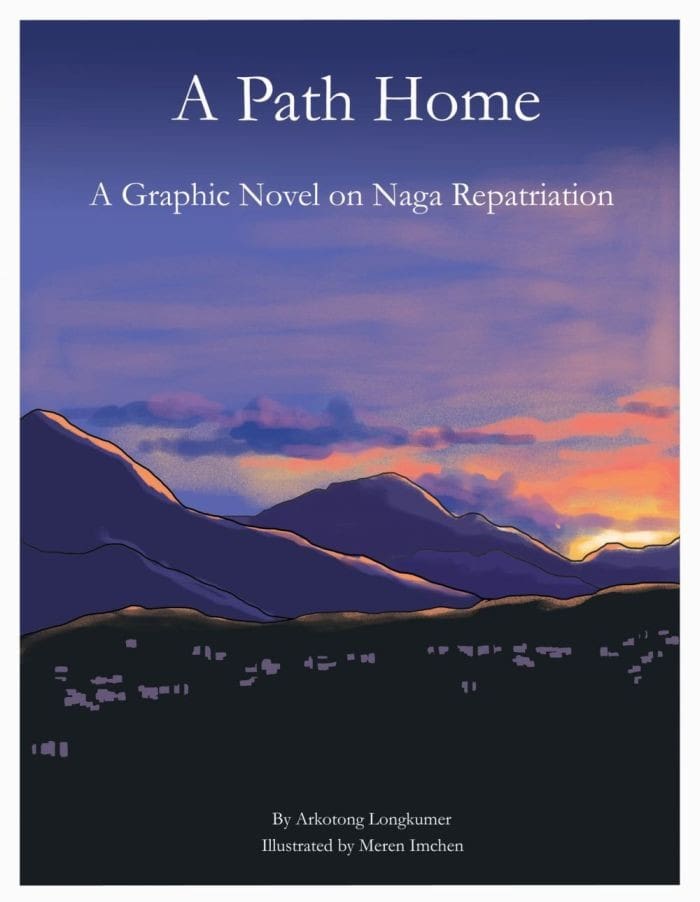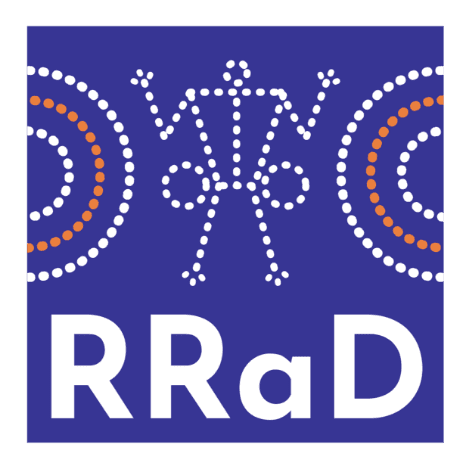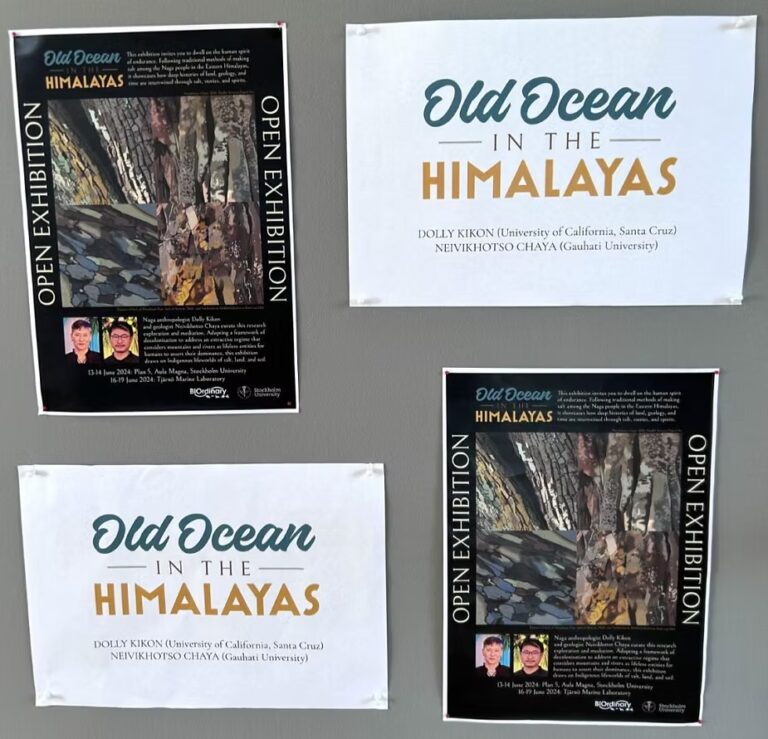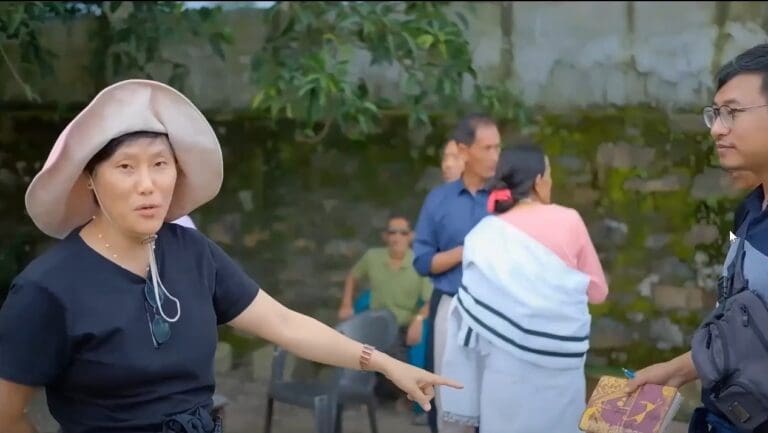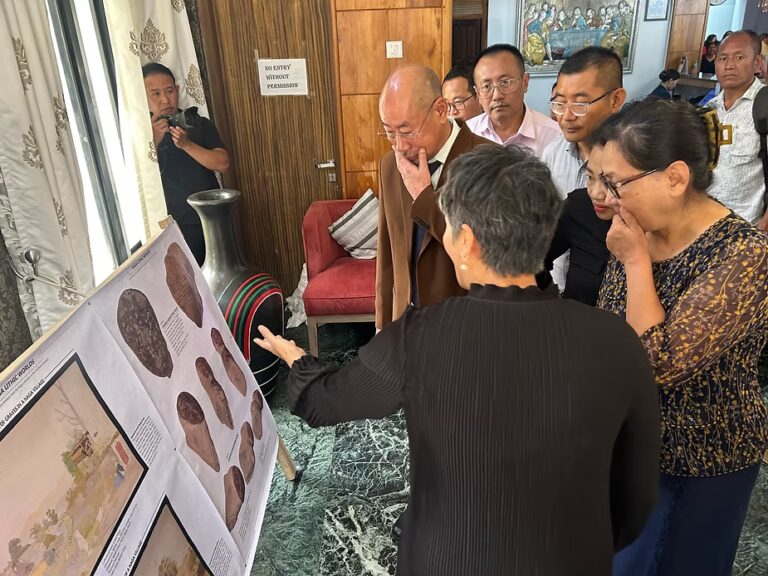By Vishü Rita Krocha
While Repatriation has taken different journeys for different communities across the world, “as Naga people, we are joining a global conversation that started maybe about half a century ago,” says Dolly Kikon, Associate Professor at the Anthropology and Development Studies program, Melbourne, Australia.
In an exclusive interview with The Morung Express, she related that as Naga people we are not breaking any boundaries globally, but in terms of South Asia and the Himalayan context, we are really the first community, which is really big. Emphasizing that it has to be a Naga journey and a Naga way of looking at Repatriation, she underlined that “This is for us and whether it happens in our lifetime or the coming future generation, this is a process where we can’t hurry.” Repatriation, she highlighted, “connects the past, present and the future at once and it really grounds us, and forces us to actually understand our past.”
While the first stage of repatriation of Naga Ancestral Remains has been about being part of the RRaD (Recover, Restore and Decolonise) Team, connecting with the Pitt Rivers Museum, the Forum for Naga Reconciliation (FNR), and going to the communities, Dolly Kikon put across that, “we are in the second stage. The second phase has also been about embracing a new consciousness of Repatriation and what is colonisation.”
The fact that even people are wondering what is this itself is a beginning, she implied while articulating that one of the things in the second phase is ‘learning together and understanding what is collective effort.’ In the process, they were asked questions like “who cares about decolonisation when Nagas are struggling to make ends meet, or struggling with unemployment?”
Among all things, she felt that this comes from a deep sense of honesty and from a place of reality and the toughness of reality that we are facing. However, for the first time, she remarked, “it has been a process where people are forced to encounter the reality of the past.” “It is also the process of decolonisation that has brought us here,” she went on to state while putting across, “we are talking about a place where we are thinking of the future.”
In terms of challenges they have faced in the process, she said, the biggest challenge is making time for it as those involved are all professionals besides the additional challenge of “reaching out, making sure that we can travel together, and have more people to write about it.” In this context, while the Naga Repatriation process has garnered international attention and has also been covered by national papers, she stated surprise that “Nagaland Post, the largest selling newspaper in Nagaland has not even touched this topic.”
“I am just amazed at the nature of our own media,” she said while expressing that other newspapers including Eastern Mirror, The Morung Express, Nagaland Page and other local media have been in the forefront in this regard.
‘Something that the future generation of Nagas will have to carry through’
More than the challenges faced during the process, Dolly Kikon emphasizes on how it has brought them together” even while asserting, “this is something that the future generation of Nagas will have to carry through.”
As they also reflect on the outcome of the Repatriation, she said, “I’ll reach retirement and it’s also humbling but I get such joy to see that…that’s why we call it a process.” It’s not one outcome, she went on to say while stating that “every generation has to reflect and retrospect what it meant for them.”
“I really feel that this is a process we are starting for ourselves with all the challenges we have and also for the future generation and that’s what is so distinct and so admirable about indigenous knowledge, and why we call ourselves the Naga nation or the Naga community,” she maintained.
The process, she highlighted will stay with the people even while pointing out that “Nagas are spread outside the Nagaland state as well but given that we have a state, we have a Naga Land, a state government, headed by Naga people and the Nagas within the state will have to take extra responsibility.”
“This is also a chance for the government to step up and talk about the Naga people. I would like to believe that the government would in its good conscience step up and support when the time comes,” she further expressed.
‘Uncovering the complex past and a hopeful future for Naga people’
As the process of Repatriation unfolds, Arkotong Longkumer, Senior Lecturer in Modern Asia at the University of Edinburgh, UK observed that there is a real desire to understand and discuss among the Naga community. While there there’s also plenty of questions that need to be answered, he felt that “those reflections are coming and the engagement with numerous people from all walks of life have started uncovering the complex past and a hopeful future for the Naga people.”
Substantiating to this, he said, “I have been really impressed by the questions younger people have been asking and their level of engagement and insight into the process. Older people too have been asking and engaging, and I think that’s a healthy sign.” Sharing about his own experience, he stated, “While I feel a great responsibility – knowing that this is beyond me – there’s also a feeling of uncertainty.”
“We have never been here before and to do this without knowing the next steps can be quite unsettling,” he said but went on to say that “it is rewarding nonetheless because of the goodwill, support and guidance of many in Nagaland, not to mention the RRaD team.”
Two of the biggest challenges of the process, he pointed out, are time and resources while highlighting that, “we need many people onboard this process and while it can be tiring for those involved, it can also seem never-ending. We are keenly aware of these challenges, as we realised early on – when we embarked on this – that these were factors that would emerge.”
On how the process can also help in healing our people and our land, he articulated that “these are grand ideas and one must be mindful of how we understand these issues.”
“I think undergoing this process is also (I feel) understanding a part of our history that has faced plenty of silence and discomfort. Yes, we sometimes talk about the intervention of the Brits and Americans, and the good things they have introduced, but that is also a colonial mindset which we need to overcome,” he further expressed.
Also stating that there’s the healing that needs to occur after years of conflict in the Naga lands after Indian independence, he however emphasized that, “all of this requires fortitude, resilience, patience that builds a capacity for hope. So healing, yes, healing of the land, yes, but how we get there is more important. And to do that we need to walk together as a people and find the inner strength to withstand the things that hinder that.”
The Team is currently working on two particular resources to help disseminate their work. Acknowledging that there is so much creativity amongst the Nagas, they are firstly involved in a website project – which operates as an archive. “It is a place where we keep all the public engagement, resources, and writeups that emerge from the process. That website has been launched and can be visited here – https://rradnagaland.org/,” he highlighted.
A Path Home: A Graphic Novel
The second project is that of a graphic novel on ‘Naga Repatriation’ by Arkotong Longkumer and illustrated by Meren Imchen. For Longkumer, it has been such a journey of creativity and understanding even as he expressed, “we are immensely pleased with the way many people have encouraged and helped us along the way.”
Stating that the key task was how do they translate such a difficult process – repatriation and decolonisation – through a visual narrative, and grounded in the local context of characters and issues, he is however hopeful that “this will be another insightful avenue for exploration and launch other creative responses.”
As somebody who was always interested in Naga History or history in general, Meren Imchen, the illustrator found the project really interesting although initially burdened with the challenge to plan out the whole issue of repatriation in a visual narrative form which could be accessible to any viewers.
“The main challenge for me for this graphic novel was the timeline. But luckily, I think I’ve managed to complete in time (I hope). For a graphic novel there were many stages involved.
First was the script stage which Dr Arkotong had developed. Then came my visual technical part of developing the characters based on the script, followed by planning my visual panels out (sketches) based on the script to fit it into 50-page novel, which took some time. Once this was done I worked on the final drafting of images of each panel, which is also known as pencilling. The final stage was the colouring of all the panels which took a big chunk of my time,” he further highlighted.
On the Naga Repatriation, he personally feels that “what belongs originally to the land must be duly returned back as there are a lot of emotions attached to it in terms of pride, integrity, rightful ownership and hurt.” He is also hoping that “when the day comes, when rightfully what was ours is returned, that there should be a platform where they can be preserved and showcased in all its glory.”
First published in The Morung Express on February 09, 2023
Link: https://morungexpress.com/repatriation-connects-the-past-present-and-futureit-has-to-be-a-naga-journey


